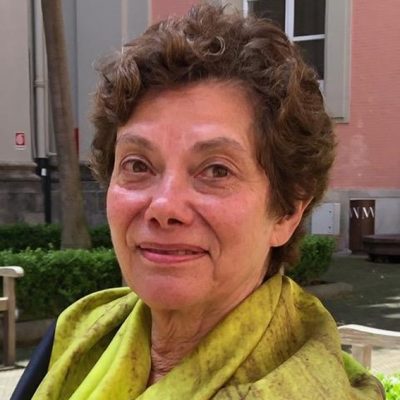Introduction to teaching strategies
Dr Christina Magkoufopoulou; Dr Alice Cherestes; Dr Leslie Schneider; and Dr Andrew Middleton
In this section, we have collated chapters that address a variety of active learning strategies that can be used within the classroom and beyond and we have identified three main themes: active learning strategies, playful learning strategies and learning strategies that are based on co-creation.
Active Learning Strategies
The classroom needs to be perceived as inviting and conducive to learning from the first time the student enters it. To this extent Kirby describes the importance of using icebreakers to help students feel less anxious about voicing their opinion. Weekly ice breakers, at the beginning of class, help students engage with other fellow students which ultimately builds social support and student engagement. Using icebreakers on a regular basis also establishes a behavioural prompt that learning is starting.
Studies clearly indicate that engagement between students and instructors positively affects learning. Learning requires ‘educational practices that engage students across disciplinary boundaries in learning experiences that tackle real problems, allow for application of course content to those problems, and lead to sustained intellectual growth and a heightened sense of personal responsibility’ (Groccia & Hunter, 2012). To achieve these outcomes, a student must engage with the learning process on behavioural, affective, and cognitive levels. To engage at a behavioural level, the learner must have some degree of participation or effort, and be persistent in the learning process. At the affective level of engagement, the learner must have a level of interest in the experience that results in improved motivation and enjoyment, thus establishing a level of commitment. Lastly, the learner must engage on a cognitive level displaying a degree of mental activity, processing thoughts about the experience that should result in the ability to cognitively process the experience and establish linkages to previous experiences. Moran proposes a novel method of engaging students, a model adapted from career guidance and counselling. The four step approach of clarifying, exploring, evaluating and action planning leads to a collaborative active learning structure.
Cooperative learning provides opportunities for problem solving, discussion, and consensus building in an educational environment. This is distinctly different from other types of group sessions in that it requires face-to-face interaction, individual accountability, group processing, and positive interdependence of team members (Summers & Svinicki, 2007). Collaboration refers to activities that are related to how the group is functioning in accomplishing a task. Within collaborative learning, the responsibility for learning shifts from the teacher to the group members (Bruffee, 1995). This provides an opportunity for the group members to regulate their collaboration process. Thus, in order to reach the learning goals all group members have the responsibility to participate in the collaboration process. In the context of team-based learning, Kyrousi describes the successful implementation of group activities, applicable in any skills-building course. Bailey further explores the use of team-based learning with a focus on the behaviours achieved at the end of the learning module.
Active Learning Classrooms are learning spaces intentionally designed to promote student-centred, collaborative, and technology-enhanced instruction and learning (Beichner, 2014). These spaces have a few typical features such as round or curved tables (pods) with moveable seating that allow students to face each other and thus support small-group work. Magkoufopoulou invokes active learning strategies and outcomes with an emphasis on the role that the physical learning space affords.
Dale et al. describe the use of object-based learning as an active learning teaching technique. This method involves the active integration of objects into the learning environment and their role in the acquisition and dissemination of subject-specific and cross-disciplinary knowledge, observational, practical and other transferable skills.
Active Learning curriculum require students to approach their studies in new ways. In John Robinson’s chapter she introduces project management techniques that help students to engage effectively with the active learning tasks that they are set.
Those chapters provide a wealth of ideas on how to create a supportive learning environment, where collaboration can flourish through the use of the physical and online learning space and the use of artefacts and objects, among others.
Playful Active Learning
Over the past decades, higher education has been highly focusing on metrics as a measure of success that results in high pressure both for academics and students. To counter this, over the last few years there has been a rise in gameful approaches in higher education that aim to enhance student engagement and satisfaction and alter the mind-set of students, where the importance of failure is recognised (Nørgård et al, 2017).
Within this section, we have included a selection of chapters that discuss how play and playfulness are an important part of active learning. They reflect the theoretical perspectives of active learning and distributed cognition and some were guided by principles from Computer Supported Collaborative Learning (CSCL) (Johnson et al, 2000). The contributions are aligned with Vygotsky’s (1978) socio-cultural theory on human learning which describes learning as a social process that occurs during social interaction among individuals. The theoretical basis provided by social constructivism is strengthened by the theory of distributed cognition which Bell and Winn (2000) define as a person’s individual cognitive acts plus the augmentation of other people, external devices, and cultural tools. In other words, cognition includes both the social and physical environments. The production of physical artefacts as in Lego constructions, puzzles, or paper fortune tellers present opportunities for learners to work collaboratively and provide student work for class-wide viewing and discussion. CSCL complements this view, allowing for the design of environments and activities that both increase student content knowledge and foster work-life skills, such as collaborative problem-solving with shared understanding and decision-making (Means et al., 2013; Scardamalia & Bereiter, 1994). Group interaction exposes students to different views giving learners the chance to examine dense material from multiple perspectives. Collaborative learning fosters flexibility whereby learners gain insight into their own thinking processes (Strijbos et al., 2004).
The chapters discuss a wide variety of strategies for playful active learning that is fun, authentic, and interactive. Tasler’s use of Fortune Cookies and Keshishi’s use of fortune tellers help learners engage reflectively with their learning. Hack explains how she uses spinners to encourage active engagement and critical thinking in an informal game-like activity where students answer questions anonymously. Active learning using Legos as described by Fox is an innovative way to build group coherence, confidence and thinking skills through peer collaboration using physical objects. Similarly, through the use of cards customised with names and features of individual components of a cell, Smith finds that students in a large setting are encouraged to cooperate and learn together. All these strategies shift students’ attention away from both computer screens and the instructor, making learning student-centred. This kind of play-based learning can increase engagement and understanding by encouraging risk-taking in a safe environment.
However, gameful learning approaches can also be applied within online systems as shown by the strategies introduced by Heywood, Walker, Jewitt, and Mystakidis. The educational escape room concept as described by Heywood and by Walker describes gamification through scaffolded problem-solving to build thinking skills through peer collaboration. Students work collaboratively toward a shared goal and develop teamwork, leadership, communication, and decision-making skills. Further, Jewitt and Mystakidis et al. explain how a 3D virtual world and role playing can enable students to practice skills such as critical thinking, collaborative problem solving, and reflection. Finally Hancock shows how attempting to create a physical model of a concept – instead of simply repeating its definition, often learnt by heart – enables students to gain an in-depth appreciation of what the concept means. Physical models can be built using cheap materials, such as plasticine. Role-play and creativity build confidence and encourage participation among passive learners.
All of these chapters describe play-based approaches that encourage active learning via collaborative activities and co-construction of artefacts – both physical and virtual – mediated by language and other multi-media tools for communicating, explaining, reflecting, and discussing. Because they are fun and engaging, the activities illustrate a pedagogically rich way to foster collaboration among students so that they can learn new concepts and practice applying them with the support of a community of peers.
Collaboration and Co-creation
Arguably, co-creation defines active learning itself: it positions the learner as the primary agent of their learning within a social constructivist context (Vygotsky, 1962). Here, we focus more closely on pedagogies of ‘making’ and the learner as ‘participant with agency’.
For Nerantzi and Matthews acts of making and designing at scale are experienced in a Global Culture Jam (GCJ) lasting five days. This immersive ‘jam’ event creates a space of common purpose for a diverse group of educators, students and non-academic partners. Their collaboration allowed them to explore the full complexity of topics such as community, sustainability, curriculum and creativity. A challenge for co-creation is how to empower participants; a challenge heightened here by the diversity and reach of those with an interest in the aims of the event. The authors note the importance of integrating representatives of each stakeholder group in the planning. Stakeholder involvement in the event design is relatively clear, but it remains an important consideration for the teacher when applied in the context of curriculum design: is co-creative pedagogy dependent upon student participation in the pedagogic design or is it enough simply to design activities that offer participants space for self-direction and determination? The authors also highlight the need for a destination for co-created artefacts. In the GCJ, for example, the authors created the idea of a ‘GCJ museum’ in which to curate and showcase some of the work generated by participants during the week.
Donnelly and Sai also consider the curation of co-created artefacts as being significant in An Active Learning ‘Co-Created Ideas’ Collection. Students on their online PG Certificate in ‘University Teaching’ generate ideas during a one-hour session in response to a set of headings framed as questions. As in the previous chapter, ideation creates an inviting divergent and generative learning context in which participants can evaluate their experience for mutual benefit. In this way co-creative learning avoids getting bogged down in detail. Donnelly and Sai’s case study reflects the way that co-creation and curation exemplify a Community of Practice ethos (Wenger & Traynor, 2015), and this is heightened by the sharing of practices and repertoires through the building of a collection of useful ideas. The intention of sustaining the collection is also highlighted by the author, demonstrating how acts of curation can be a motivational force by giving contributors a real sense of shaping the future, not only their present.
Rawe, in Chemistry Is for Everyone – A Co-Created Website Showcasing the Work of First Year Undergraduate Chemistry Students, addresses similar ideas about how to make acts of deep learning into a profound identity-building experience. She recognises how having an authentic audience becomes an important factor for her 44 students as co-creating curators. Their autonomy comes from the options she gives her students to select a text and to decide on how they want to collaborate. Even at this early stage, Rawe is keen for her students to identify as chemists and to address their communications skills and self-efficacy by co-constructing a showcase for family and friends.
Cardoso uses the co-creation of Rubrics as active learning tools. While rubrics are usually provided by the academic and associated with assessment, this case study argues that the making of a rubric offers a way to engage students as collaborative learners. She argues peer learning increases motivation and promotes long-term learning while establishing a co-operative, rather than competitive, ethos. As an instructional strategy, this allows students to play to the strengths of their knowledge through their co-design of the assessment rubric with participation and contribution being rewarded. Student participation and cooperation is what Logotheti achieves through student-centred, collaborative learning activities that involve students presenting (already covered or new) course materials, and supporting each other in creating the most exhaustive presentation.
In summary, within this section we have collated a selection of inspiring and authentic ideas for engaging students with their learning and allowing students to assume a leading role in the design of their learning experiences. We hope that this section will inspire the reader to use more active learning strategies in their teaching, and create opportunities for co-creation with their learners.
References
Anderson, L. W., Krathwohl, D. R., Airasian, P. W., Cruikshank, K. A., Mayer, R. E., Pintrich, P. R., Raths, J., & Wittrock, M. C. (2001). A taxonomy for learning, teaching, and assessing: A revision of Bloom’s taxonomy of educational objectives. Longman.
Beichner, R. (2014). History and evolution of active learning spaces. New Directions for Teaching and Learning 137, 9–16. https://doi.org/10.1002/tl.20081
Bell, P., & Winn, W. (2000). Distributed cognitions, by nature and by design. In D. H. Jonassen & S. M Land (Eds.), Theoretical foundations of learning environments (pp. 123-145). Taylor & Francis.
Bruffee, K. A. (1995). Sharing our toys: Cooperative learning versus collaborative learning. Change Magazine, 27(1), 12–18. https://doi.org/10.1080/00091383.1995.9937722
Dunkle, K. M., & Yantz, J. L. (2021). Intentional design and implementation of a “flipped” upper division geology course: Improving student learning outcomes, persistence, and attitudes. Journal of Geoscience Education, 69(1), 55–70. https://doi.org/10.1080/10899995.2020.1787808
Groccia, J. E. & Hunter, M. S. (2012). The first-year seminar: Designing, implementing, and assessing courses to support student learning and success: Volume II—Instructor Training and Development. The National Resource Center.
Johnson, D. W., Johnson, R. T., & Stanne, M. B. (2000). Cooperative learning methods: A meta-analysis. University of Minnesota.
Johnstone, A. H. (1997). Chemistry teaching-science or alchemy? Journal of Chemical Education, 74(3), 262-268. https://doi.org/10.1021/ed074p262
Kolb D. A. (1984). Experiential learning: Experience as the source of learning and development. Prentice-Hall.
Laursen, S., Andrews, T., Stains, M., Finelli, C. J., Borrego, M., McConnell, D., & Foote, K. (2019). Levers for change: An assessment of progress on changing STEM instruction. American Association for the Advancement of Science.
Means, B., Toyama, Y., Murphy, R., & Baki, M. (2013). The effectiveness of online and blended learning: A meta-analysis of the empirical literature. Teachers College Record: The Voice of Scholarship in Education, 115(3), 1-47. https://doi.org/10.1177/016146811311500307
Meyers, C., & Jones, T. B. (1993). Promoting active learning: Strategies for the college classroom. Jossey-Bass.
National Research Council. (2000). How people learn: Brain, mind, experience, and school (expanded edition). National Academies Press.
National Research Council. (2012). Discipline-based education research: Understanding and improving learning in undergraduate science and engineering. National Academies Press.
Nørgård, R. K., Toft-Nielsen C., & Whitton, N. (2017) Playful learning in higher education: developing a signature pedagogy, International Journal of Play, 6(3), 272-282. https://doi.org/10.1080/21594937.2017.1382997
Scardamalia, M., & Bereiter, C. (1994). Computer support for knowledge-building communities. The Journal of the Learning Sciences, 3(3), 265-283. https://doi.org/10.1207/s15327809jls0303_3
Strijbos, J. W., Martens, R. L., & Jochems, W. M. (2004). Designing for interaction: Six steps to designing computer-supported group-based learning. Computers & Education, 42(4), 403-424. https://doi.org/10.1016/j.compedu.2003.10.004
Summers J. J., & Svinicki, M. D. (2007). Investigating classroom community in higher education. Learning and Individual Differences, 17, 55–67. https://doi.org/10.1016/j.lindif.2007.01.006
Vygotsky, L. S. (1962) Thought and language. MIT Press (original work published in 1934). https://doi.org/10.1037/11193-000
Vygotsky, L. S. 1978. Mind in society. Harvard University Press.
Wenger, E., & Trayner, B. (2015). Introduction to communities of practice. http://wenger-trayner.com/introduction-to-communities-of-practice/





